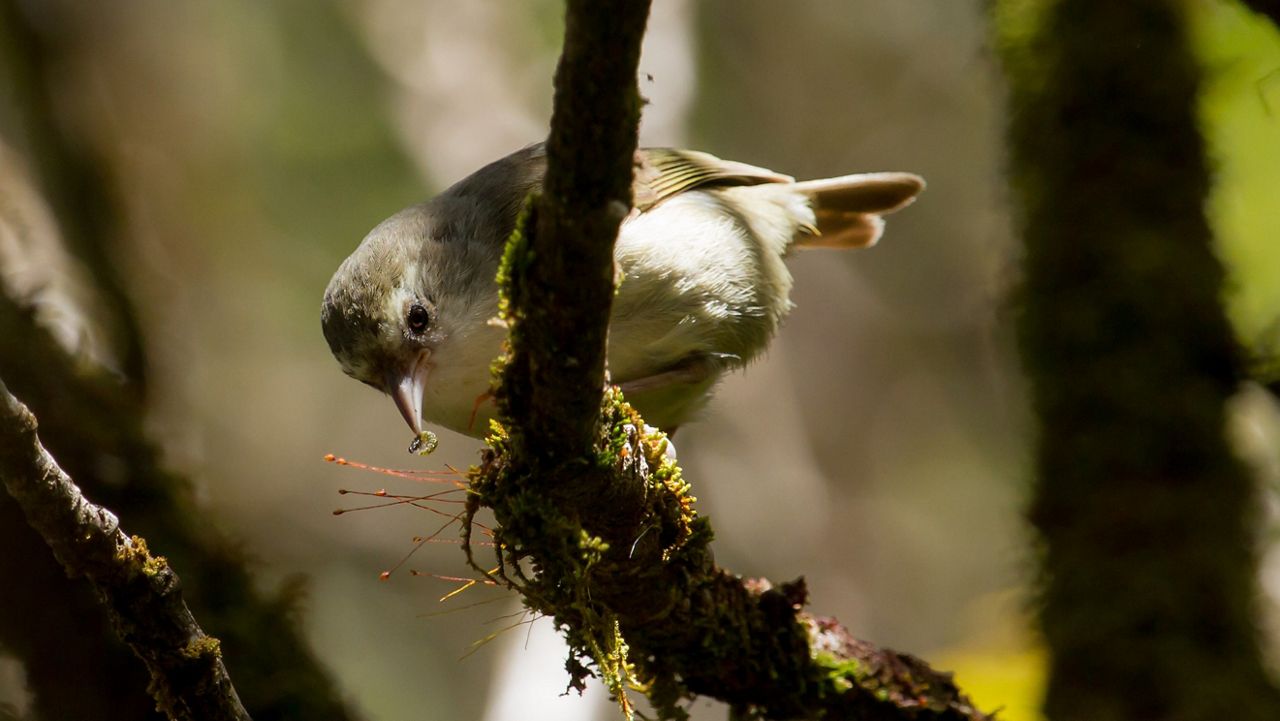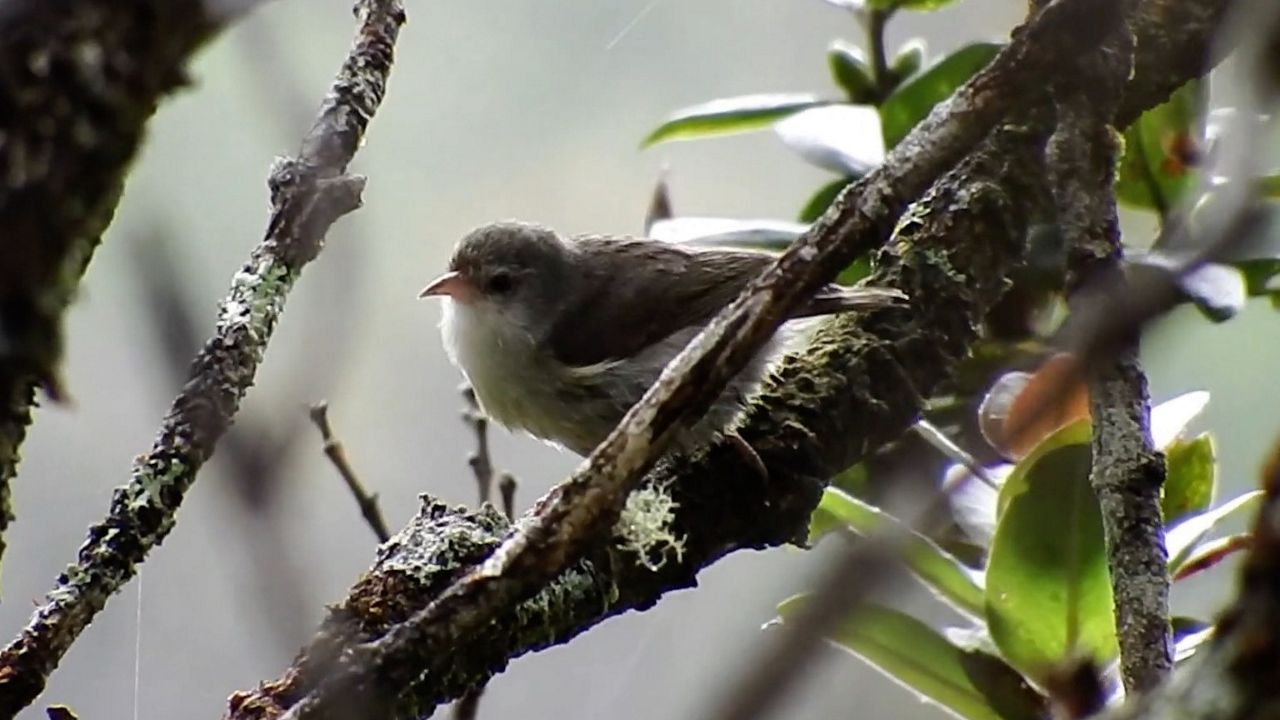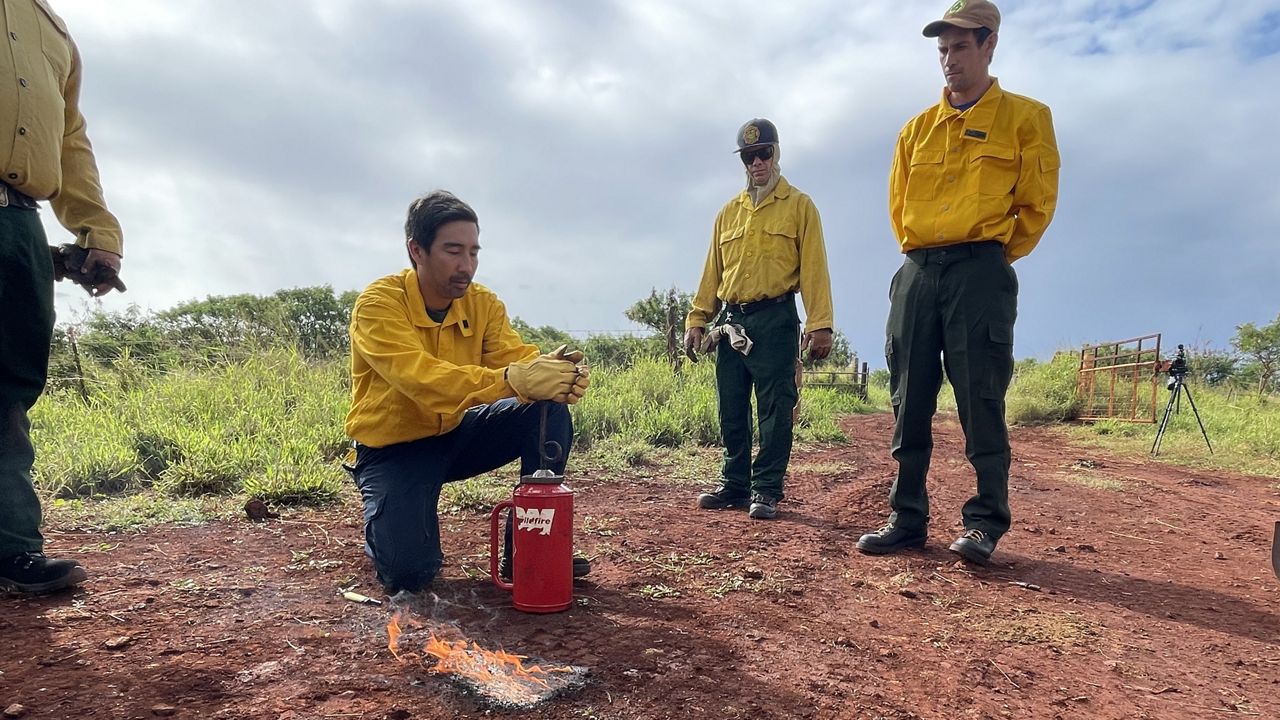Biologists monitoring populations of the endangered akikiki forest bird on Kauai have found a drastic drop in one field site, Halehaha, according to a Department of Land and Natural Resources news release.
Located in the central mountains of Kauai, the site had a population of 70 birds in 2015 but now holds just five in 2021. The data was compared to other field sites on the island and shows that Halehaha may be an unsafe habitat.
As a result, the Kauai Forest Bird Recovery Project, a partnership with DLNR and the University of Hawaii Pacific Cooperative Studies Unit, will temporarily transport the five to a breeding facility on Maui managed by the San Diego Zoo Wildlife Alliance. The decision was approved by the Board of Land and Natural Resources last Friday.
Many native birds such as the akikiki have made their homes in forests lush with native flora such as the ohia. However, the spread of invasive species has proven a challenge for survival.
Surveys at Halehaha showed a recent increase in invasive mosquitoes that carry avian malaria and other diseases. Removing the birds from their native habitat is a last resort — the only way to keep the population from being entirely eliminated.
The Kauai five will join nearly 40 akikiki at the Maui facility, all of whom were hatched from eggs collected in earlier rescue operations.
While the akikiki are being cared for on Maui, biologists on Kauai will continue monitoring other field sites and work to restore the birds’ forest habitat at Halehaha. A collaboration with experts statewide will also help develop solutions to restore Hawaii’s native forests.
A Kauai-based group that the Kauai Forest Bird Recovery Project has previously worked with, Ka Imi Naauao O Hawaii Nei Institute, gave its blessings for the project’s field work.
A tool to combat mosquitoes is being developed by the Birds Not Mosquitoes partnership that includes DLNR and Kauai Forest Bird Recovery Project as its members. The Incompatible Insect Technique is a bacterium that acts as a mosquito birth control that could be used to reduce the invasive pests.
The endangered akikiki, Oreomystis bairdi, is a native forest bird endemic to Kauai. According to the Kauai Forest Bird Recovery Project, this small gray and white honeycreeper was first described in 1887. Researchers have found Akikiki nests in the crowns of native ohia trees. The bird’s reproductive period has been observed from January through July and rarely does it produce more than one brood each year. Parents care for their juvenile Akikiki for up to 18 months.









